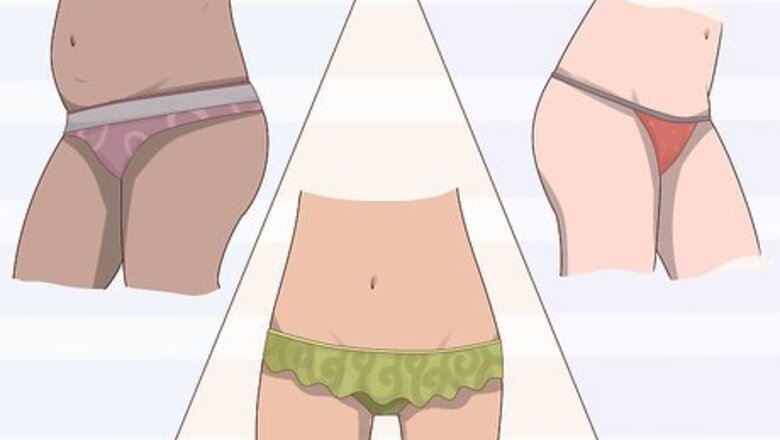
views
Understanding Thongs
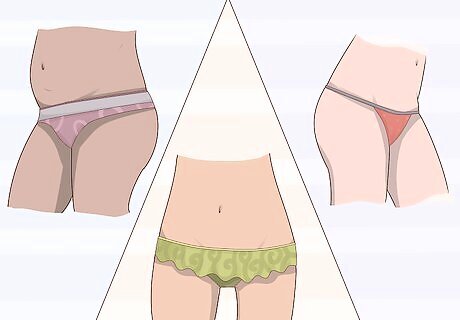
Know about the different types of thongs. If you’re new to the thong world, you’ve likely been exposed to various thong vernacular, but have no clue what it means. There are three general styles of thong: the traditional, the g-string, and the tanga/samba. The traditional thong will have full coverage in the front and likely has a wide waist-band, but narrows to a strip of fabric 1-inch wide or narrower that is slid between the buttocks. A g-string is a thong that has a very narrow waistband, typically a strip of elastic ¼-inch or narrower. The ‘thong’ part of the g-string is also very thin, so the only fabric is pretty much a small triangle in the front. A tanga/samba thong is like a regular pair of panties crossed with a traditional thong. They typically have fabric that covers the upper half of the bum, leaving the bottom of your buttocks exposed (preventing a panty line). The rest of the underwear will vary depending on style, but typically has a thick waistband and lots of coverage.
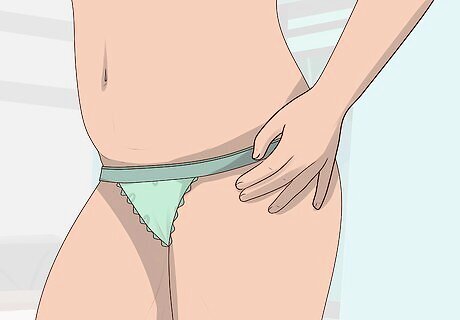
Understand what wearing a thong feels like. One of the many concerns by non-thong wearers is - isn’t it uncomfortable? Although the idea of fabric being slid up your butt sounds mostly like a bad wedgie, most thong-wearers agree that the initial discomfort is overcome almost immediately. Thongs are often considered one of the most comfortable styles of panties, especially g-strings, because there is so little fabric to become bunched up, loose, saggy, or uncomfortable in any way. Keep in mind that thongs aren’t comfortable for everyone, and they may take some getting used to. If at first you don’t love the feeling of your thong, don’t give up right away. It is a typical experience for first-time thong-wearers to dislike the feeling first, but after a few days of wearing thongs, you'll fall in love with them.
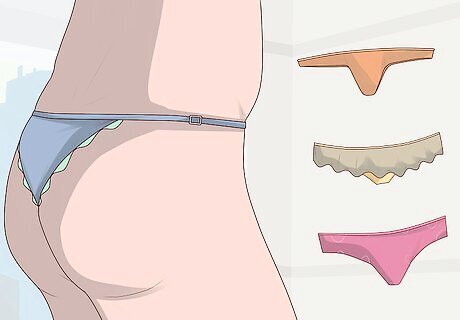
Try thongs made from different fabrics. Not all thongs are made alike. Just like regular panties, there are a plethora of fabrics, colors, and patterns to choose from. When it comes to thongs, it is generally recommended that you look for thongs made of cotton, as these are the most breathable. However, lace, silk, and satin are all common options. Lace thongs work well for minimizing a ‘muffin-top’ over the elastic, as the lace is very stretchy and forgiving in appearance. Silk and satin thongs are typically reserved lingerie-type use, but are certainly an option for those days you want to feel sexier than usual. G-strings have the highest likelihood of giving you a ‘muffin-top’, because the elastic is so thin and likely to dig into your hips. If you wear a lace thong, keep in mind that the texture of the fabric may show through your tight bottoms, therefore countering the point of wearing a thong (to hide your underwear).

Wear a thong when you want to avoid a panty line. Thongs are typically worn for the purpose of avoiding a panty line in tight pants, dresses, or skirts. The problem with most underwear is that no matter how thin the material, you can almost always see the outline of the hem through tight bottoms. A thong remedies this situation, as pants are rarely so tight in the front that you see the front outline, but in the back the hem is safely tucked away by your bum. If you’ve never worn a thong before, try starting out with the tanga/samba style. This will hide your panty line without giving you the ‘wedgie’ feeling some people complain about. High-waisted thongs help prevent the appearance of panty lines on the hips, which is helpful when wearing a tight dress.
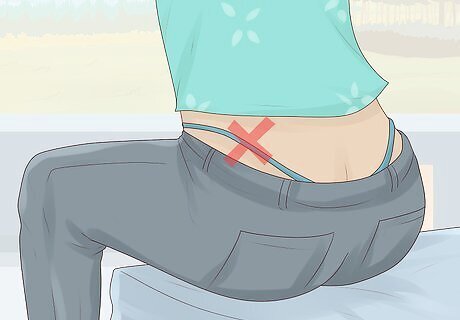
Make sure your thong doesn’t rise above your belt line. Sit down, bend over, squat, and do other similar movements in front of a mirror to test whether or not your thong becomes visible. If ‘whale tail’ is a recurring problem, you might need to try a different size or model, avoid low-rise jeans, wear a belt, or simply cover that area with a long shirt. Even so, it’s good to be prepared for making quick adjustment while you’re in public. As you sit down, subtly reach around to the back of your belt line and check if your thong is sticking out. If it’s exposed, quickly tuck it back in pull your shirt down to cover the area.
Wearing Thongs Safely

Change your thong on a daily basis. One of the problems that sometimes occurs with wearing thongs, is that they may spread bacteria faster than regular underwear, which can cause infections. Because the thong is touching both the anus and the vulva, bacteria can travel much easier between the two, especially when your thong shifts in position throughout the day. This isn’t a problem for most women, but if you experience yeast or bacterial infections frequently, you may need to switch thongs more often. Choosing a thong a size larger than what you normally wear may improve both the comfort and the sanitary experience of your thong. Cotton thongs will prevent bacterial spread better than other types of fabric, so if you’re afraid of infection, try going for thin cotton.
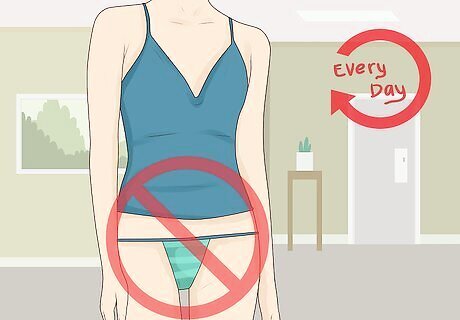
Avoid wearing thongs every day. For the same reason that you should change your thong on a regular basis, you should avoid wearing your thong every day. Bacteria can easily travel up the fabric of the thong, which means wearing one every day can make you more prone to infections. Try wearing thongs only during the day or times when they are a needed fashion piece. Wear full-coverage panties at night, when you work out, and when you are wearing heavy jeans or other bottoms which won’t show your panty line.

Avoid wearing thongs when you’re sick. If you’ve decided thongs are your go-to underwear for daily wear, don’t toss out all your other panties just yet! When you’re sick, typically with diarrhea or food poisoning, you won’t want to be wearing a thong. This can spread germs and fecal matter (definitely not cool), and be a bit more uncomfortable when your nether-regions are feeling sensitive. You may want to avoid thongs on your period as well, as the blood and discharge will spread easier on a thong than in bikini bottoms. Although nobody likes to consider it an option, a thong won’t provide much protection should a leak occur.

Prevent spreading germs in a thong by wiping the right way. It’s true, no one likes to talk about their bathroom wiping rituals. But if you’re wearing a thong, you can actually greatly increase your chance of a bacterial infection by wiping the wrong way! Wipe your bum from the front to the back; this will push any bacteria or fecal matter away from your vulva, where it could become infected. Some people prefer wiping with a damp wipe rather than dry toilet paper, but this isn’t required. Most importantly - make sure you’re clean! You’ll probably be uncomfortable if you don’t clean yourself well enough and then put on a thong.




















Comments
0 comment